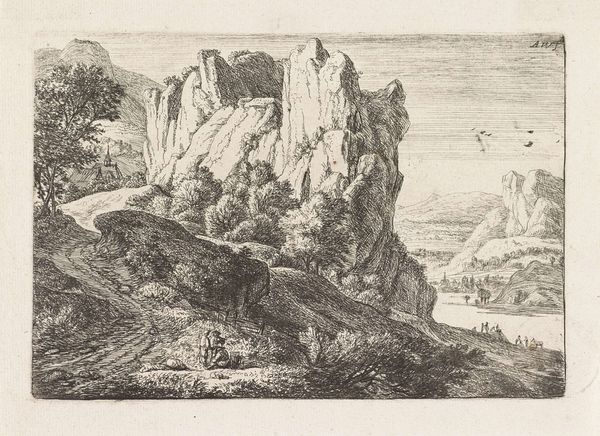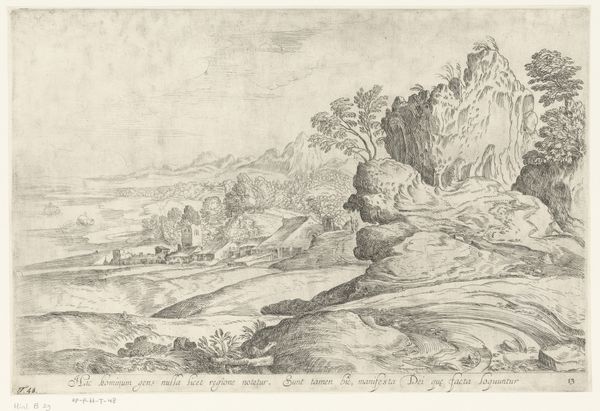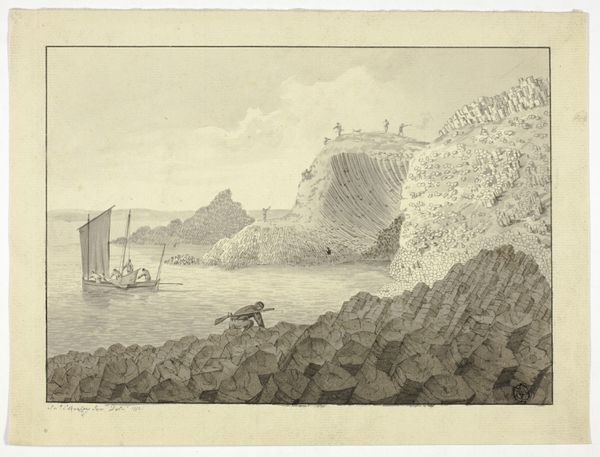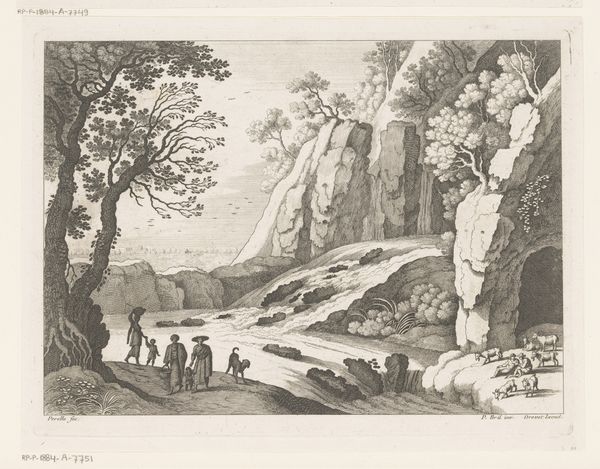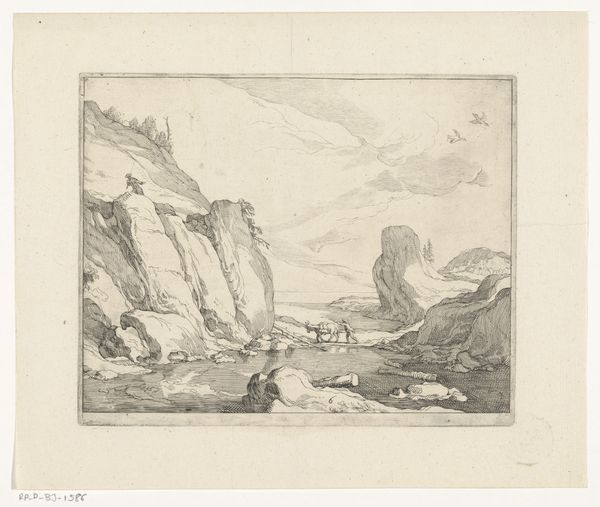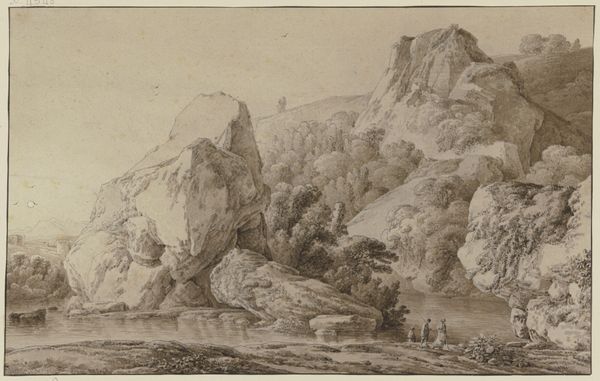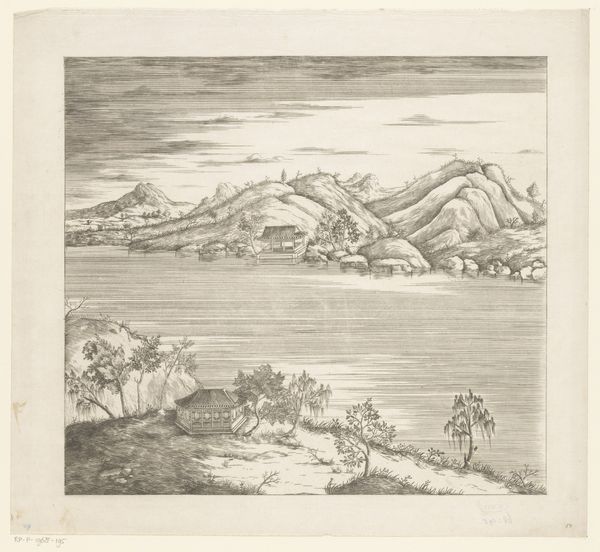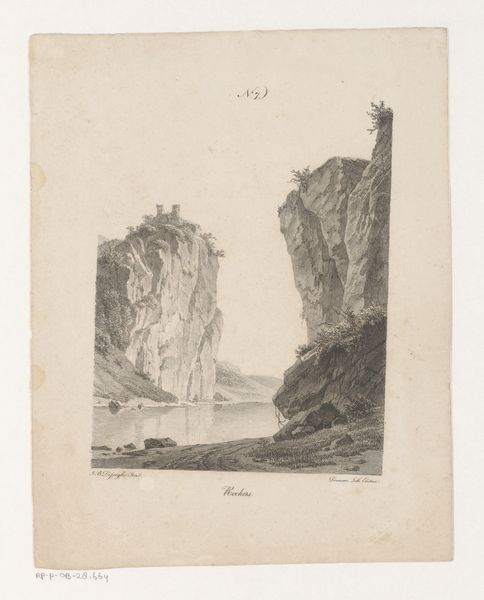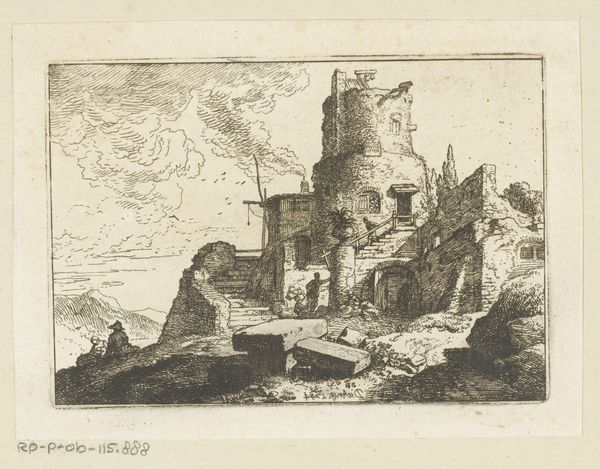
engraving
#
baroque
#
landscape
#
figuration
#
mountain
#
engraving
Dimensions: height 130 mm, width 192 mm
Copyright: Rijks Museum: Open Domain
Curator: Here we have "Berglandschap met drie mannen in gesprek" or "Mountain Landscape with Three Men in Conversation" by Daniel Rabel, dating roughly between 1588 and 1637. The engraving presents an imposing vista. Editor: Yes, an etching, it seems. What strikes me immediately is the sense of starkness – a deliberate contrast between the immensity of the natural forms and the almost inconsequential scale of the figures. It is interesting in its texture, but seems overly concerned with a very traditional composition. Curator: Absolutely. Consider how Rabel employs line and shading to articulate the rugged textures of the rocks and the play of light across the mountain face. Note, for example, the cross-hatching in the lower left corner that contrasts dramatically with the soft cloud cover at the top. Editor: And yet that linearity – it’s all about the surface, isn’t it? This landscape is constructed through the labor of the engraver. One must remember the copperplate from which the image came. I am also intrigued by those three men in conversation. Their interaction implies some level of surveying or navigation of these spaces; the clothing worn by the middle man may suggest exploration. I am wondering, is the labor they engage in reflected in this image? Or is this a simple Baroque exercise in rendering three-dimensionality and the sublime? Curator: One can interpret that by analyzing the visual relations of space and narrative—it might involve ideas about human ambition and control over nature; an interest typical of the Baroque period. Editor: Perhaps. But let’s think of the physical labor. The print, replicated and disseminated, played its own unique role. Rabel certainly took advantage of the labor it took to reproduce such an etching for mass circulation. What impact does that reproductive capacity and process have on the image’s meanings and values? Is the landscape truly natural when rendered through tools, production, and consumption? Curator: I appreciate the layers you have illuminated here. The social context and impact offer compelling insights into understanding how landscapes reflect—and influence—our worldviews. Editor: Yes. Perhaps, together, we have been able to offer ways in which images can reveal, and conceal, the various human endeavors and materials required for us to apprehend our relation to the landscapes which are, themselves, as mediated as any artifact.
Comments
No comments
Be the first to comment and join the conversation on the ultimate creative platform.

